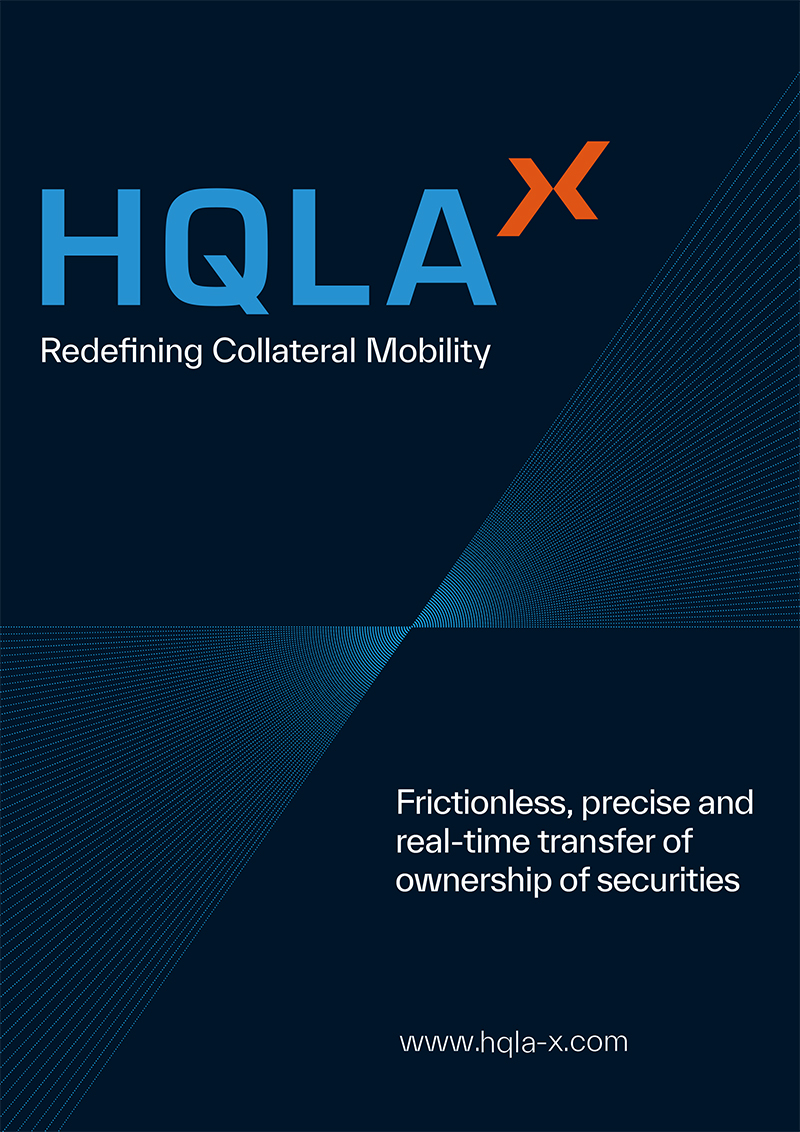What does new technology mean for securities lending?
13 September 2022
Nancy Steiker, senior director, FIS Securities, Finance and Collateral, explores how technology innovation will reshape the settlement and lifecycle management methods used to support securities lending
 Image: stock.adobe.com/Blue Planet Studio
Image: stock.adobe.com/Blue Planet Studio
In recent months there has been an increased focus and conversation around what the next generation of securities lending post-trade and collateral will look like.
Basel IV regulation-driven increases in capital charges from 2025 will seek to enhance credibility in the calculation of risk-weighted assets (RWAs), improve transparency and allow for an easier comparison of banks’ capital ratios. This could substantially increase bank costs, which will then be passed on to the beneficial owners. Meanwhile, rising interest rates, quantitative tightening, inflationary pressures, Uncleared Margin Rules (UMR) and other macroeconomic factors will further drive industry participants to protect margins.
Against this backdrop, there is a growing demand for solutions that can address the inefficiencies and exaggerated costs that encumber the market in its current state. So where will the market efficiencies be created? For some, the answer lies in the new technology that is powering the growth in digital assets. From blockchains to smart contracts, digital assets and tokenisation, how could the latest developments in technology have a positive impact on the securities lending market as we know it today?
Blockchain
Blockchains are a type of digital ledger technology (DLT) that consists of a growing list of records called blocks, that are securely linked together using cryptography and are used to record and timestamp transactions and balances. Crucially for capital markets, blockchains can be private and secured. That means they are centrally controlled, with access limited to authorised participants who can only view data that is pertinent to them and to their role.
This addresses the security and know-your-customer (KYC) limitations of public blockchains — but what other advantages does a decentralised and private blockchain have over a traditional centralised database? One key benefit is that if your trading activity sits on a blockchain, you have a central and immutable golden source of all your activity accessible in real-time — which means you only have one reconciliation point, rather than having to reconcile and resolve differences with all your bilateral counterparties.
Where blockchains really come into their own, however, is with what you can do with digital assets and smart contracts.
Digital assets and smart contracts
Originally created by the crypto industry, digital assets come in many forms aside from well-known crypto currencies. Likewise, they have some notable benefits outside of that model.
A digital asset, simply put, is an asset that is stored digitally, has a unique identifier, and can be used to identify value. In securities finance, this may be a digital token representing a ringfenced and immobilised holding of a traditional asset. Or it can be a digitally native asset — in other words, a security issued only on a blockchain.
When a digital asset is traded on a blockchain, there does not need to be a physical movement of that asset — unlike traditional assets, which move from one custodian to another. With digital assets, the movement is merely represented by adjustments in the ledger which are created by blocks on a chain, and this can happen near instantaneously. The benefits here are tangible and significant: lower custody fees and movement fees; a reduction in settlement risk, as the digital assets must be in place in order to trade them; and the removal of a lot of post-trade settlement and reconciliation activities.
The whole transaction is represented in a smart contract: an executable programme that contains the terms of the trade and automates all the activity related to that trade, once agreed by both parties. As well as the operational efficiencies and risk reduction benefits, that settlement certainty and speed can increase the velocity of collateral, enable intra-day financing, turbocharge collateral optimisation, and cut down overnight capital requirements.
Conclusions on the impact to the securities lending market, DLT and smart contracts will reduce the friction, costs and risk associated with the traditional securities market and regulatory risks. Without the need for a down period, market trading cycles could theoretically operate 24 hours a day, seven days a week and 365 days a year, reducing the barrier to entry and attracting more liquidity into the markets. This, in turn, would inevitably lead to changes in market behaviour for lenders, borrowers and custodians, as well as for the current exchange models.
The industry is still developing and will need to build new technology infrastructure, which will take time and require robust testing, before the current model evolves to support all digital and traditional assets. Looking further ahead, while the underlying reason behind securities lending activity will not change, the settlement and lifecycle management methods used for these assets certainly will.
Basel IV regulation-driven increases in capital charges from 2025 will seek to enhance credibility in the calculation of risk-weighted assets (RWAs), improve transparency and allow for an easier comparison of banks’ capital ratios. This could substantially increase bank costs, which will then be passed on to the beneficial owners. Meanwhile, rising interest rates, quantitative tightening, inflationary pressures, Uncleared Margin Rules (UMR) and other macroeconomic factors will further drive industry participants to protect margins.
Against this backdrop, there is a growing demand for solutions that can address the inefficiencies and exaggerated costs that encumber the market in its current state. So where will the market efficiencies be created? For some, the answer lies in the new technology that is powering the growth in digital assets. From blockchains to smart contracts, digital assets and tokenisation, how could the latest developments in technology have a positive impact on the securities lending market as we know it today?
Blockchain
Blockchains are a type of digital ledger technology (DLT) that consists of a growing list of records called blocks, that are securely linked together using cryptography and are used to record and timestamp transactions and balances. Crucially for capital markets, blockchains can be private and secured. That means they are centrally controlled, with access limited to authorised participants who can only view data that is pertinent to them and to their role.
This addresses the security and know-your-customer (KYC) limitations of public blockchains — but what other advantages does a decentralised and private blockchain have over a traditional centralised database? One key benefit is that if your trading activity sits on a blockchain, you have a central and immutable golden source of all your activity accessible in real-time — which means you only have one reconciliation point, rather than having to reconcile and resolve differences with all your bilateral counterparties.
Where blockchains really come into their own, however, is with what you can do with digital assets and smart contracts.
Digital assets and smart contracts
Originally created by the crypto industry, digital assets come in many forms aside from well-known crypto currencies. Likewise, they have some notable benefits outside of that model.
A digital asset, simply put, is an asset that is stored digitally, has a unique identifier, and can be used to identify value. In securities finance, this may be a digital token representing a ringfenced and immobilised holding of a traditional asset. Or it can be a digitally native asset — in other words, a security issued only on a blockchain.
When a digital asset is traded on a blockchain, there does not need to be a physical movement of that asset — unlike traditional assets, which move from one custodian to another. With digital assets, the movement is merely represented by adjustments in the ledger which are created by blocks on a chain, and this can happen near instantaneously. The benefits here are tangible and significant: lower custody fees and movement fees; a reduction in settlement risk, as the digital assets must be in place in order to trade them; and the removal of a lot of post-trade settlement and reconciliation activities.
The whole transaction is represented in a smart contract: an executable programme that contains the terms of the trade and automates all the activity related to that trade, once agreed by both parties. As well as the operational efficiencies and risk reduction benefits, that settlement certainty and speed can increase the velocity of collateral, enable intra-day financing, turbocharge collateral optimisation, and cut down overnight capital requirements.
Conclusions on the impact to the securities lending market, DLT and smart contracts will reduce the friction, costs and risk associated with the traditional securities market and regulatory risks. Without the need for a down period, market trading cycles could theoretically operate 24 hours a day, seven days a week and 365 days a year, reducing the barrier to entry and attracting more liquidity into the markets. This, in turn, would inevitably lead to changes in market behaviour for lenders, borrowers and custodians, as well as for the current exchange models.
The industry is still developing and will need to build new technology infrastructure, which will take time and require robust testing, before the current model evolves to support all digital and traditional assets. Looking further ahead, while the underlying reason behind securities lending activity will not change, the settlement and lifecycle management methods used for these assets certainly will.
NO FEE, NO RISK
100% ON RETURNS If you invest in only one securities finance news source this year, make sure it is your free subscription to Securities Finance Times
100% ON RETURNS If you invest in only one securities finance news source this year, make sure it is your free subscription to Securities Finance Times



